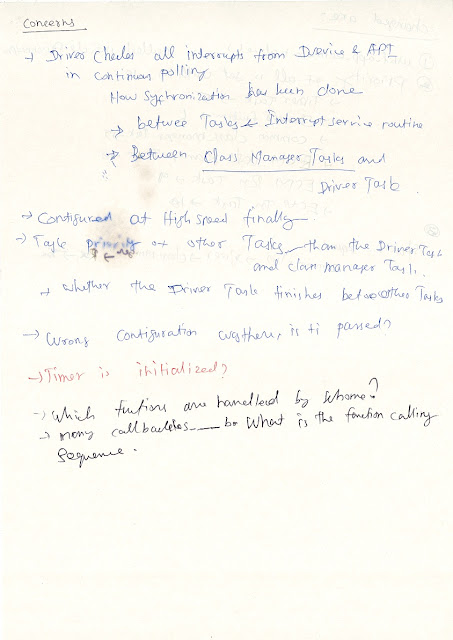① Delete Semaphore or Mutex
② uITRON implementation to delete semaphore
ER del_sem(ID semid)
{
Check context. If called from ISR,
return E_CTX;
Sanity check on arguments
Enter critical section (Interrupt Disable)
If (semaphore resource count == 0) { /* some task may be waiting */
For each task waiting on the semaphore's queue {
Set E_DLT at the error code register of task's context
If task is waiting for timeout {
Delete task from timer queue
}
Set task's status as Ready
If task is not in suspended state {
Change the task from semaphore's queue to ready queue
If executing task's priority is lower than the waiting,
set to execute scheduler when quitting this function
}
else {
Delete the task from the semaphore queue
}
}
}
Release resources allocated when creating semaphore(Release semaphore's queue)
If scheduler has to be executed {
Call scheduler
Return the error code in the context's error code register
}
Exit critical section (Interrupt Restore)
return E_OK;
}
③ uITRON implementation to delete mutex
ER del_mtx(ID mtxid)
{
Check context. If called from ISR,
return E_CTX;
Sanity check on arguments
Enter critical section (Interrupt Disable)
For each task waiting on the mutex's queue {
Set E_DLT at the error code register of task's context
If task is waiting for timeout {
Delete task from timer queue
}
Set task's status as Ready
If task is not in suspended state {
Change the task from mutex's queue to ready queue
If executing task's priority is lower than the waiting,
set to execute scheduler when quitting this function
}
else {
Delete the task from the mutex queue
}
}
If this mutex has been locked by any task {
Remove the mutex from the task's mutex list
}
Release resources allocated when creating mutex(Release mutex's queue)
If scheduler has to be executed {
Call scheduler
Return the error code in the context's error code register
}
Exit critical section (Interrupt Restore)
return E_OK;
}
For other posts, please look under RTOS label.
Similar to creation of mutex, deletion cannot be done from interrupt context. Deletion can be done from task contexts which has some priority value. All the waiting tasks in the queue are just waken up and E_DLT is set as return error code for them. However, deletion of mutex is assumed to be called after unlock of resource.
Deletion of semaphore is same as mutex.
② uITRON implementation to delete semaphore
ER del_sem(ID semid)
{
Check context. If called from ISR,
return E_CTX;
Sanity check on arguments
Enter critical section (Interrupt Disable)
If (semaphore resource count == 0) { /* some task may be waiting */
For each task waiting on the semaphore's queue {
Set E_DLT at the error code register of task's context
If task is waiting for timeout {
Delete task from timer queue
}
Set task's status as Ready
If task is not in suspended state {
Change the task from semaphore's queue to ready queue
If executing task's priority is lower than the waiting,
set to execute scheduler when quitting this function
}
else {
Delete the task from the semaphore queue
}
}
}
Release resources allocated when creating semaphore(Release semaphore's queue)
If scheduler has to be executed {
Call scheduler
Return the error code in the context's error code register
}
Exit critical section (Interrupt Restore)
return E_OK;
}
③ uITRON implementation to delete mutex
ER del_mtx(ID mtxid)
{
Check context. If called from ISR,
return E_CTX;
Sanity check on arguments
Enter critical section (Interrupt Disable)
For each task waiting on the mutex's queue {
Set E_DLT at the error code register of task's context
If task is waiting for timeout {
Delete task from timer queue
}
Set task's status as Ready
If task is not in suspended state {
Change the task from mutex's queue to ready queue
If executing task's priority is lower than the waiting,
set to execute scheduler when quitting this function
}
else {
Delete the task from the mutex queue
}
}
If this mutex has been locked by any task {
Remove the mutex from the task's mutex list
}
Release resources allocated when creating mutex(Release mutex's queue)
If scheduler has to be executed {
Call scheduler
Return the error code in the context's error code register
}
Exit critical section (Interrupt Restore)
return E_OK;
}











